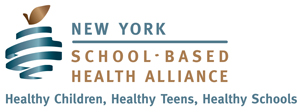Governors began the first quarter of 2022 proposing and enacting state budgets and delivering State of the State addresses. The issues they focused on during their speeches and in the proposed investments outlined in their budgets give a comprehensive picture of Governors’ key priorities. Over the last two years, public health has taken precedence as the COVID-19 pandemic has hit states in waves and altered life for all. Through their speeches and budget proposals, Governors continue to build capacity to improve public health infrastructure, implement best practices to address issues exacerbated by the pandemic and remove barriers to reduce fragmentation across agencies and within health systems.
The National Governors Association Center for Best Practices (NGA Center) Public Health Team compiled priority topics defined by Governors during their State of the State addresses and in their proposed state budgets. Three Governors did not deliver a State of the State address (MT, NC and TX) because the legislature was not in session. Additionally, several states enacted two-year budgets in 2021, covering fiscal years 2022 and 2023 (HI, IN, ME, MN, MT, NE, NV, NH, NC, ND, OH, OR, TX, WA and WI).
State of the State addresses from the nation’s Governors emphasize the varied aspects of public health and the states’ power to address ongoing challenges. This brief explores legislative requests for the 2022 session as well as other specific plans outlined by Governors. While a number of issues emerged, including health care costs and environmental health, the key priority areas were the following:

HEALTH CARE WORKFORCE

The pandemic further highlighted the need to strengthen investments in the health care workforce. Thirty-nine Governors mentioned health care workforce in their budget proposals or their State of the State addresses. Common themes included:
- Training and education;
- Behavioral health workforce;
- State employee salaries;
- Hospital, existing workforce and rural workforce capacity;
- Nursing homes and
- Direct care shortages.
Many states included plans to improve recruitment for nurses, physicians and other clinical jobs through initiatives such as loan forgiveness, scholarships and programs allowing students or trainees to work while learning.
MATERNAL AND CHILD HEALTH

Thirty-seven states mention efforts to address varied areas of health policy affecting women, families, parents and children. Common themes include childcare, childhood immunizations, childhood obesity, mental health, expanding postpartum Medicaid coverage, early learning and development programs, infant and maternal mortality and investments in schools and early learning.
MENTAL HEALTH

Governors in 33 states mention mental health as a primary objective for 2022 and beyond. Common themes include mental health workforce, cross-agency or department collaboration, children and youth, affordability and access, 988 Suicide and Crisis Lifeline and suicide rates. Many Governors’ budgets propose significant investment to expand mental health services, increase access and support mental health initiatives in schools.
SOCIAL DETERMINANTS OF HEALTH

Social determinants of health (SDOH) include a variety of social and environmental factors that impact an individual’s quality-of-life outcomes and risks. Some of these things include transportation access, social discrimination, education, income, job opportunities and access to food and clean water. While housing falls under this umbrella term, it will be addressed more specifically later in this publication. Seventeen states mention equity and social determinants of health (outside of housing) more explicitly in their addresses. Some common themes include food insecurity, child-care, broadband access, collaborative equity efforts and enhancing diversity in workforce programs.
PUBLIC HEALTH INFRASTRUCTURE

State public health programs include infectious disease monitoring, injury prevention, immunization and a range of other vital services that are the core for planning, delivering and evaluating the health of communities. COVID-19 has illustrated the need for strong, yet nimble infrastructure to address emerging issues and cover the diverse issues and populations addressed through public health programs. Fifteen Governors mention public health infrastructure in their addresses, addressing topics like investing in emergency response, bolstering data collection and modernizing systems.
To continue reading, CLICK HERE.
Apr. 19, 2022
Michelle LeBlanc
